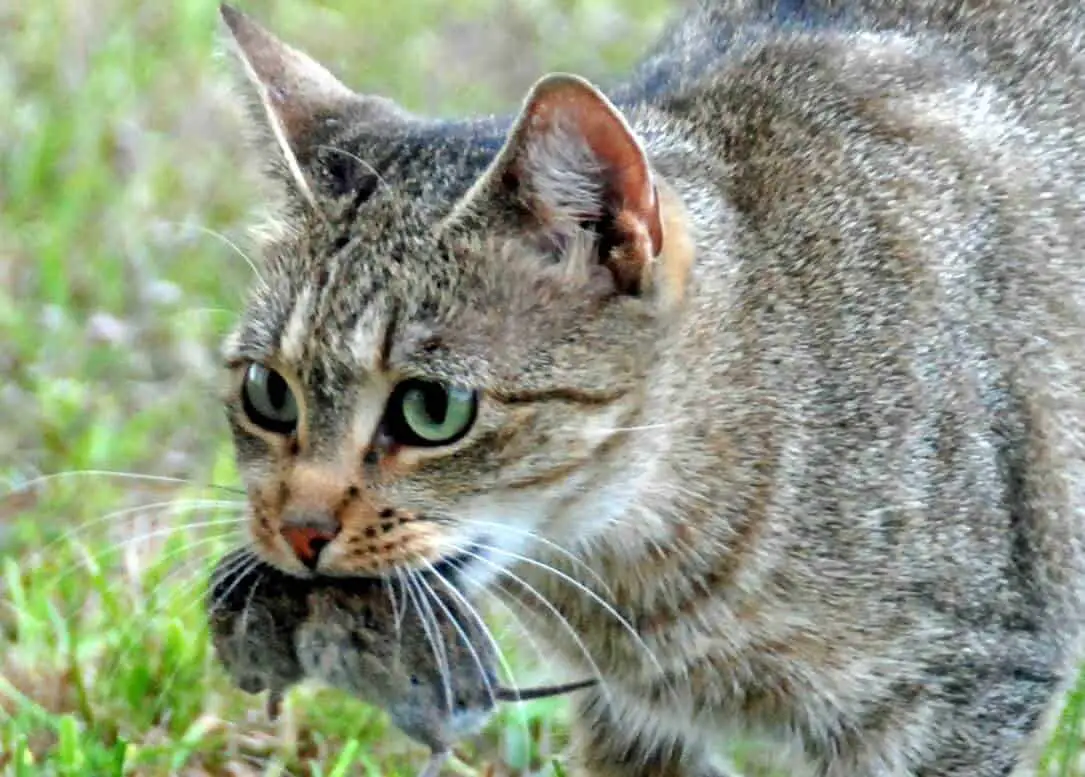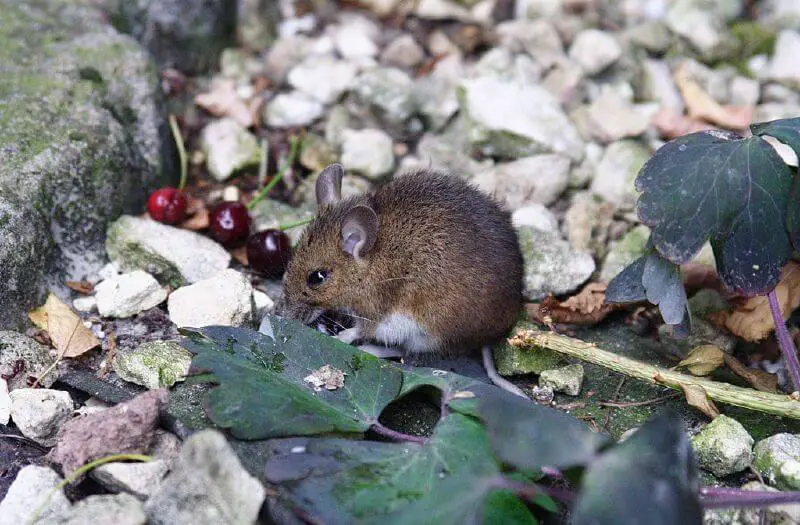
If you’re worried you might have a few mice in your house, then you’ll want to look around your home for signs of mouse droppings. Mice are very prolific when it comes to leaving droppings. A single mouse can create between 50 to 75 droppings a day. That’s far more than a rat, which produces about 40 to 50 droppings a day.
How to tell if mouse droppings are fresh? Fresh mouse droppings look wet. They give off a soft and moist appearance. Dull, hard mouse droppings are a few days to a week old. If the mouse droppings look dry and hard, that means they’ve had time to harden, and they are older.
While that description is quite simple, learning how to distinguish fresh mouse droppings from the droppings of other rodents takes a bit more explanation. As such, we did a bit more research into the topic to provide you with an overview of what fresh mouse droppings look like while also providing you with a few ways to approach a mice infestation if you discover you have one.
What Do Fresh Mouse Droppings Look Like?
To distinguish the level of mice infestation you might have, you’ll need to be able to determine what fresh mouse droppings look like. That means being able to tell the appearance of mouse droppings against other typical rodents that infest homes, like rats. If you can distinguish whether the mouse droppings are fresh or not, you’ll know if your mice problem is an old or new issue.
Distinguishing mouse droppings from rat droppings is something you can typically do based on size. There is a significant size difference between mouse droppings and rat droppings because mice are much smaller than rats. (If your problem seems to be primarily an outside problem, check out this article on voles.)
So, mouse droppings typically measure an eighth to a quarter of an inch long. Rat droppings, by comparison, are about a half an inch in length. They appear broader and more massive than what mouse droppings look like.
Mouse droppings are also more tapered on each end. Some people feel that mouse droppings look like darker rice grains. Mouse droppings have an off-whitish appearance, usually. Rat droppings, on the other hand, are much larger and typically look gray and crumbly by comparison.
When trying to distinguish how old mouse droppings are, color can play a crucial factor. However, color can also depend on the source of food the mice are eating, so this can sometimes prove difficult.
However, the best way to tell how old the mouse droppings are is to clean the droppings up or hire an expert to remove them. Once they are removed, you can then re-inspect the area one day later. If you notice new droppings, then you know you have a mice infestation.

Is Fresh Mouse Poop Hard or Soft?
To summarize the difference between old and new mouse droppings, take a look at our list below.
- Fresh mouse droppings look moist. If you touch them, they’ll feel wet and soft.
- Old mouse droppings look more faded and dry. If you touch them, they’ll crumble and fel hard.
- If droppings are at least 48 hours old, they might start to look faded and try. You can squish them to see if they are old or new.
- Remember that most mouse droppings tent to look off-white. However, the droppings can vary in color depending on what the mice are eating.
Where to Look for Mouse Droppings
Mice tend to be nocturnal creatures, so that makes them hard to discover in the middle of the night. However, that’s also why most people analyze their droppings to assess for an infestation.
Remember, if you have mice, they’ll leave plenty of evidence behind. After all, they leave behind between 50 to 75 droppings (sometimes also called pellets) daily.
You can usually tell how bad your mouse infestation is by figuring out the number of pellets left behind, and also figuring out where the mice are leaving their droppings. Typically, you’ll wind up with more than just one mouse in your house if you discover droppings.
If you’re finding mouse droppings in your house, then you should inspect or have a professional inspect the following in your home:
- Areas in the house where you store or make your food. That includes kitchen cabinets and pantry areas.
- Near your water heater and in your utility closet. Mice are attracted to warmth.
- Cabinets in your bathroom.
- Closets where mice can easily hide.
- Crawl spaces
- Your attic.
- Areas of the house that have exposed pipes, air vents, or holes in the walls.

Removing Mouse Droppings
Once you find those mouse droppings in your house, chances are you’ll want to get rid of them quickly. However, to permanently get rid of the mouse droppings, you’ll need to get rid of the mice that are making the droppings. While you can clean up whatever droppings you find, if you still have mice living in your home, you’ll discover more droppings later on.
It’s best to seek out advice from a professional when you want to remove mouse droppings. It’s recommended by the Centers for Disease Control and Prevention (CDC) to avoid picking up or touching mouse droppings with your bare hands.
So, if you do plan on testing out the mouse droppings yourself to see if they are old or new, make sure you take the following precautions:
- Before cleaning the area full of mouse droppings, air it out for about 30 minutes.
- Make sure you wear latex or rubber clothes. We also suggest wearing a breathing mask as well for health reasons.
- Spray the affected area with a disinfectant spray. Then, let the spray sit on the area for about five minutes.
- If you don’t have a disinfectant spray, you can make your own. Mix ten parts of water with one part of bleach.
- After the affected area sits for a few minutes, clean it with rags or paper towels.
- Once you are done cleaning the area, remove the mouse droppings and the paper towels or rags and put them in a plastic bag. Seal the plastic bag.
- Afterward, dispose of the sealed bag in a trash can with a cover. Get rid of that trash as soon as you can.
While it might be tempting to sweep or vacuum the area with the mouse droppings before you disinfect it, these actions should be avoided. If you sweep or vacuum the area before disinfecting it, particles from the mouse droppings can become airborne. Then, you might wind up making yourself or the people you live with sick.
How to Handle a Mice Infestation
If you’re experiencing a mice infestation, there are a few things you’ll want to look out for to prevent mice from entering your home.
- Search around for entry points mice might be using to get inside your home. Mice can come through entry points that are as small as a dime.
- Check for areas that mice may have chewed to access the house and fix them. Mice can chew plastic, wires, insulation, and wood.
- If you notice openings around pipes or cables that come through walls on the home’s inside, seal them.
- Make it as difficult as possible for mice to access food. Avoid dirty dishes and crumbs in the home. Secure the pantry and kitchen cabinets.
- Also, keep any pet food you have in the house sealed off in heavy plastic containers and not soft plastic bags. Mice can chew through soft plastic bags.
Related Articles
You might enjoy these related articles:
How To Keep Rats And Mice Away From Cars
How To Stop A Vole Problem No Matter Where You Live

